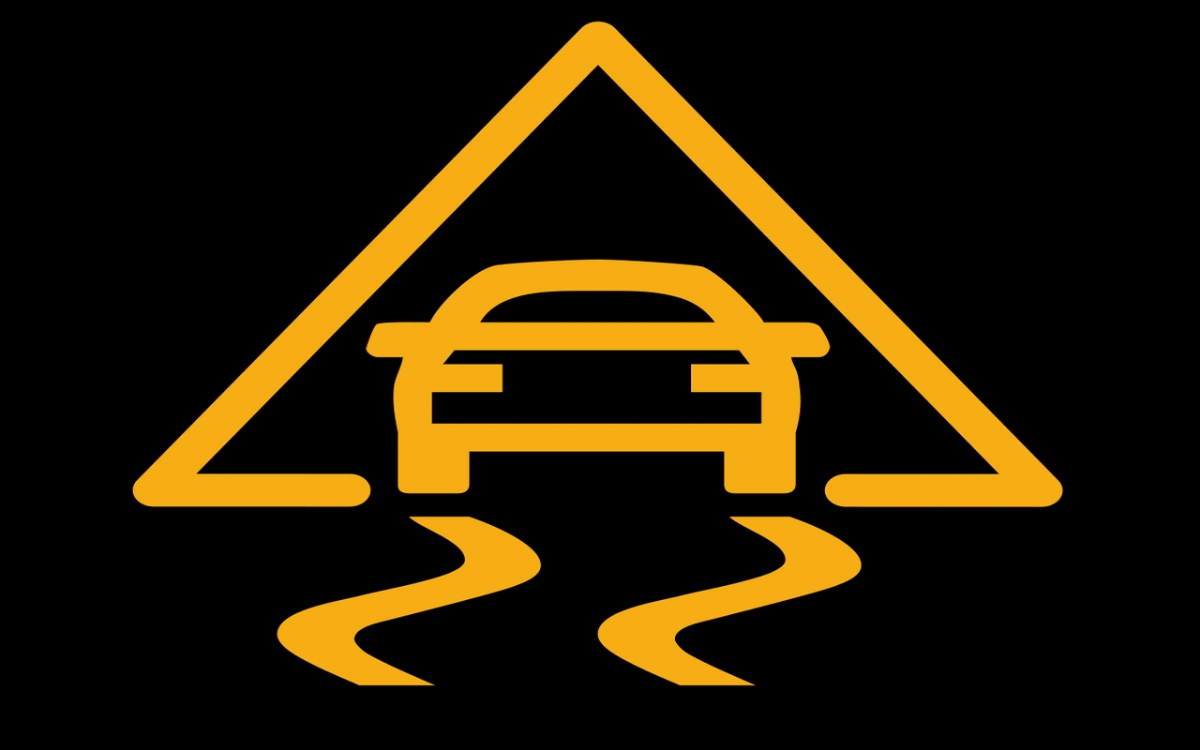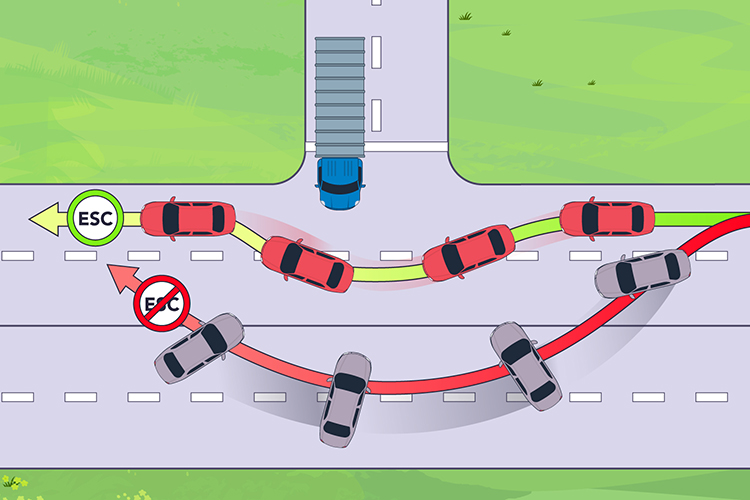What is ESC?

Driving safety took a big step forward in the mid-1990s with the introduction of electronic stability control. German car supplier Bosch developed the first system and the Mercedes-Benz S-Class and BMW 7 series were the first cars to use the new safety and regulatory devices.
It's been more than a decade since electronic stability control was first introduced and it goes by many names, depending on the company. Audi calls it Electronic Stability Program or ESP, Ford has Advance Trac, GM has Stabilitrak and Porsche puts its own stamp on the system by calling it Porsche Stability Management.
But whatever their names, all these systems use high-tech sensors, the car's central computer and mechanical actions to help ensure safe driving. We often read that high-performance cars have a tendency to understeer or oversteer, but the reality is that any car can veer off course, especially if the road is slippery.
Understeer occurs when the front wheels do not have enough traction and the vehicle keeps moving forward instead of turning. Oversteer is the opposite: the vehicle turns more than the driver intended, causing the rear wheels to slip and the vehicle to skid. ESC, known as electronic stability control, can help correct both of these situations.
Electronic Stability Control
The electronic stability control system doesn't work alone - it uses the vehicle's other safety and regulatory devices, such as anti-lock braking and traction control, to correct problems before they become accidents. The center of the ESC system is also the center of the car: the yaw control sensor. It is almost always placed as close as possible to the very center of the car. If you were sitting in the driver's seat, the yaw control sensor would be under your right elbow, somewhere between you and the passenger. But what the hell is "yaw"? If it sounds like something a pirate would say, that's probably because it is. Ships and cars are both subject to yaw, a movement about the vertical or z-axis. It is as if the car is fixed like a butterfly in a shop window, where the pin is the z-axis. The yaw sensor is in the center of the pin. If the ESC system detects that the car is wobbling too much (or not enough) around this up-down axis, it takes action to help.
Using all the modern electronic systems at its disposal, ESC can activate one or more individual brakes, depending on which wheel can most improve driving safety, and control the throttle to reduce the vehicle's speed of movement. The sensor looks for differences between the direction of the steering wheel and the direction the vehicle is traveling; the vehicle's computer then makes the necessary corrections to bring the vehicle's direction of travel in line with the driver's desired direction.
There are numerous safety and regulatory devices in cars these days, all working together to keep the wheels on the road and the passengers safe. Electronic stability control in particular relies on two other systems, ABS and traction control, as well as several specialized sensors to do its job
Before the 1990s, drivers were taught to pump the brake pedal to prevent the brakes from locking up and causing a skid. With the invention of anti-lock brakes, safe driving has become much easier. ABS electronically pumped the brakes faster than the driver could, preventing them from locking up and causing understeer or oversteer. ESC uses this system to correct the problem almost before it starts by activating ABS for as many wheels as needed, from a single wheel to four wheels. The very nature of ABS prevents over- or understeer from getting worse while slowing the vehicle to a controllable speed. ESC also uses traction control for driving safety.
If ESC is responsible for monitoring side-to-side movement around a vertical axis, traction control is responsible for front-to-rear movement. If the traction control system detects wheel slip, the electronic stability control sensor detects the direction of the slip. If there is a difference between the angle of the steering wheel and the direction in which the vehicle is slipping, ESC works with the traction control system to engage ABS at the appropriate wheel (or wheels) and also controls the throttle to reduce vehicle speed.
ESC information is transmitted to the vehicle's central computer via three types of sensors: Wheel speed sensors: A wheel speed sensor on each wheel measures the speed of the wheel, which the computer can compare with the speed of the engine. Steering angle sensors: This sensor on the steering column measures the direction in which the driver wants to steer the vehicle. If it is different from the direction the vehicle is actually traveling, the ESC system will kick in. Turn speed sensor: This is also known as the yaw sensor. It is the sensor located in the center of the vehicle that measures the side-to-side movement of the vehicle. If you want to find out what ESC can do for safe driving in the real world, turn to the next page.
Benefits of Electronic Stability Control
The most important role ESC plays in driving safety is to reduce the number and severity of accidents. Whether it's a rainstorm, a sudden patch of ice or a snowy road, almost everyone is exposed to poor and slippery driving conditions at some point. Electronic stability control, along with other safety and regulatory devices found in today's vehicles, can help drivers maintain control on the road. Electronic stability control will not be activated in the event of a fender bender, the kind of accident that usually occurs in stop-and-go traffic. However, some vehicles have other systems to help with this, such as sensors on the front of the vehicle that measure the distance between your bumper and the bumper of the vehicle in front of you, but that's not where electronic stability control really kicks in. It helps more in slippery conditions when it means a loss of control, regardless of whether there is someone else on the road or not.
Thanks for reading.



























































